Questions about gender, sexual identity and attraction are pretty common from young people. Conversations about gender identity and transgender are becoming more common and are opening up a dialogue that has been a long time coming. This section is designed to give you an overview and hopefully help demystify this topic.
The physical gender that you receive at birth is determined by the chromosomes that make up your sex chromosome set. If you are an XX your body develops along the female pathway and if it is XY it develops along the male pathway. This is the biological path that it takes unless we do something to change that pathway.
What is Gender Identity?
Gender Identity is the gender you identify as, which may not be the same as the chromosome set that you have. Sexual identity is who you feel sexually attracted to, which could be the opposite sex, the same sex, or other.
The organisation that helps health practitioners to assist those with transgender health questions and their treatment pathway is called WPATH.
How To Describe Gender Identity
There are a lot of terms used to describe Gender Identity. The ones listed below are the more common ones and the list is from the WPATH website. As we move forward in understanding gender and identity, these terms will change so please note this list as one that may alter year by year.
Gender:
Denotes the public (and usually legally recognised) lived role as boy or girl, man or woman. Biological factors combined with social and psychological factors contribute to gender development.
Assigned gender:
Refers to a person’s initial assignment as male or female at birth. It is based on the child’s genitalia and other visible physical sex characteristics.
Gender-atypical:
Refers to physical features or behaviours that are not typical of individuals of the same assigned gender in a given society.
Gender-nonconforming:
Refers to behaviours that are not typical of individuals with the same assigned gender in a given society.
Gender reassignment:
Denotes an official (and usually legal) change of gender.
Gender identity:
A category of social identity and refers to an individual’s identification as male, female or, occasionally, some category other than male or female. It is one’s deeply held core sense of being male, female, some of both or neither, and does not always correspond to biological sex.
Gender dysphoria:
As a general descriptive term, refers to an individual’s discontent with the assigned gender. It is more specifically defined when used as a diagnosis.
Transgender:
Refers to the broad spectrum of individuals who transiently or persistently identify with a gender different from their gender at birth. (Note: the term transgendered is not generally used.)
Transexual:
Refers to an individual who seeks, or has undergone, a social transition from male to female or female to male. In many, but not all, cases this also involves a physical transition through cross-sex hormone treatment and genital surgery (sex reassignment surgery).
Genderqueer:
Blurring the lines around gender identity and sexual orientation. Genderqueer individuals typically embrace a fluidity of gender identity and sometimes sexual orientation.
Gender fluidity:
Having different gender identities at different times.
Agendered:
‘Without gender’ – individuals identifying as having no gender identity.
Cisgender:
Describes individuals whose gender identity or expression aligns with the sex assigned to them at birth.
Gender expansiveness:
Conveys a wider, more flexible range of gender identity and/or expression than typically associated with the binary gender system.
Gender expression:
The manner in which a person communicates about gender to others through external means such as clothing, appearance, or mannerisms. This communication may be conscious or subconscious and may or may not reflect their gender identity or sexual orientation.
Preferred Gender Pronouns
Some transgender and gender-nonconforming people may prefer gender-neutral or gender-inclusive pronouns when talking to or about them. “They” and “their” are sometimes used as gender-neutral singular pronouns. Singular gender-neutral pronouns also include “ze” (or “zie”) and “hir.”
What Is Gender Dysphoria?
The below section is taken from this resource.
Gender dysphoria involves a conflict between a person’s physical or assigned gender and the gender with which he/she/they identify. People with gender dysphoria may be very uncomfortable with the gender they were assigned, sometimes described as being uncomfortable with their body (particularly developments during puberty) or being uncomfortable with the expected roles of their assigned gender.
People with gender dysphoria may often experience significant distress and/or problems functioning associated with this conflict between the way they feel and think of themselves (referred to as experienced or expressed gender) and their physical or assigned gender.
The gender conflict affects people in different ways. It can change the way a person wants to express their gender and can influence behavior, dress and self-image. Some people may cross-dress, some may want to socially transition, others may want to medically transition with sex-change surgery and/or hormone treatment. Socially transitioning primarily involves transitioning into the affirmed gender’s pronouns and bathrooms.
People with gender dysphoria may allow themselves to express their true selves and may openly want to be affirmed in their gender identity. They may use clothes and hairstyles and adopt a new first name of their experienced gender. Similarly children with gender dysphoria may express the wish to be of the opposite gender and may assert they are (or will grow up to be) of the opposite gender. They prefer, or demand, clothing, hairstyles and to be called a name of the opposite gender. (Medical transition is only relevant at and after the onset of puberty.)
Gender dysphoria is not the same as gender nonconformity, which refers to behaviors not matching the gender norms or stereotypes of the gender assigned at birth. Examples of gender nonconformity (also referred to as gender expansiveness or gender creativity) include girls behaving and dressing in ways more socially expected of boys or occasional cross-dressing in adult men. Gender nonconformity is not a mental disorder. Gender dysphoria is also not the same being gay/lesbian.
While some children express feelings and behaviors relating to gender dysphoria at 4 years old or younger, many may not express feelings and behaviors until puberty or much later. For some children, when they experience puberty, they suddenly find themselves unable to identify with their own body. Some adolescents become unable to shower or wear a bathing suit and/or undertake self-harm behaviors.
The Standards of care for children and adolescnts with gender dysphoria, considering transitioning to aother gender or who identify as trasngedner are located in the docment below – this is a worldwide document.
Young people with gender dysphoria are often anxious and unsure of how to work through their thoughts and feelings around their gender identity. Children and Adolescents who have gender dysphoria do not all keep this diagnosis into adulthood. There are only a small number of studies but in general up to 20% of younger children (pre puberty) identify as transgender when an adult and those who identify as transgender as an adolescent are even more likely to identify as transgender.
Adolescents are more likely to have anxiety, depression and other mental health disorders if they have gender dysphoria and it is important to support the adolescent.
So what is important about all of this?
It is important for all of us to feel good in the body that we have, and to be comfortable to express our sexual identity and orientation in the way that fits for us and our partners.
Not all of us have a sexual identity that matches the one that our genes determine for us. Some people who identify as transgender decide to transition to their affirmed gender. Those who transition from a male to female and female to male – have the option of choosing this when they are younger by postponing puberty and using medication that blocks the effects of the sex hormones on the body, and hence delaying puberty.
This decision is made with professionals such as the patient/parents – if the person is under consenting age; an endocrinologist who is the person who would determine if you are able to have this medication as well as the mental health based therapist, such as a psychiatrist or psychologist who will continue to help you with your ongoing mental health, explore areas of gender identity that may come up and to assist with the decisions that can be made after 16. If you cease these puberty-blocking agents, then your body will move through puberty and the hormones that your body would make – oestrogen is you are a natal female and testosterone if you are a natal male – in particular will take effect.
At 16 and over in Australia you can now make the decision to have treatment with hormones so that you can physically transition to your affirmed gender. This process requires all of the above people, and in particular consideration of the non-reversible step that this is. As with any medication there are important considerations to be made around taking lifelong hormone treatments, and they need to be carefully considered. A number of transgender will live as their affirmed gender for a year prior to their hormone-based treatments.
These two steps of treatment are often referred to as Phase 1 and Phase 2 treatment.
It is important that these are monitored, and that the young person is supported through these decisions and treatments. Taking hormones or seeking surgery without a strong support behind you is a very risky thing to do.
Some people will also decide to have surgical changes to their body to further appear as their affirmed gender. These are highly specialised surgeries and are performed by a small group of specialty surgeons. At this stage they are not completed for those under 16 years of age.
Gender Diversity Resources
The team at HNE Kids Health have created some helpful resources, click here to access them.
You will be able to download a printable letter to fill out and take to GP appointments to guide discussion and future plans, find information sheets for parents, children and young adults, and watch videos about the transitioning process.
Parents of Gender Diverse Children – this is a great Australian based site for parents of gender diverse kids.
The Rainbow Owl – this is a resource collection for kids, parents, professionals and families of gender diverse kids.

